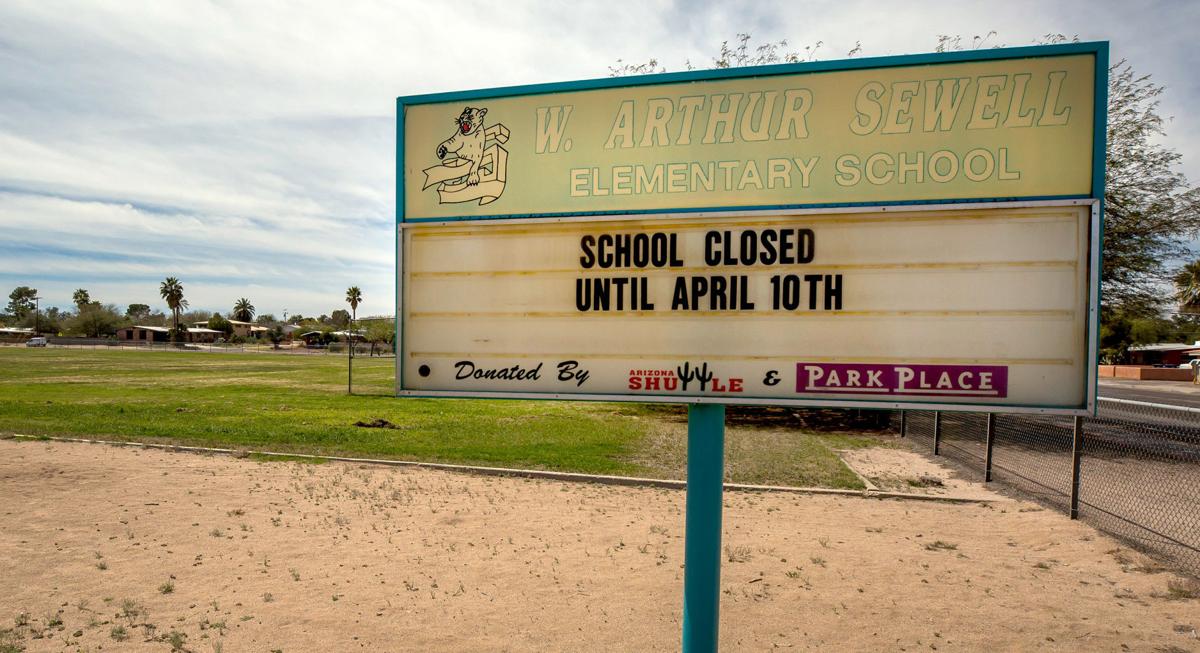In order to better serve our Southern Arizona audience, “The Point Being” podcast, which is produced by the Arizona Daily Star’s Opinion department, has begun a series of mini-episodes featuring Star news reporters, staff and local experts. The focus in these podcasts is on sharing information, not opinion.
Because we know not everyone can access or listen to podcasts, we’ve taken the best excerpts from recent interviews and condensed them here.
This edition features an update on Southern Arizona public school districts from the Star’s education reporter Danyelle Khmara. It deals with campus closures, the struggles of quickly switching to remote learning at an unprecedented scale and the logistical problems of feeding a population of students who often depend on school-provided meals for daily nutrition.
You can listen to this and other episodes in their entirety on our website, or at Apple Podcasts or Spotify.
This interview has been edited for clarity and length.
Question: Some local and state officials, including Tucson Unified School District Superintendent Gabriel Trujillo, didn’t favor the idea of closing schools completely. Why?
Danyelle Khmara: I feel like (Superintendent Trujillo) was in line with pretty much everyone taking their direction from the county Health Department and from the governor. Three weeks ago, Pima County’s interim health director was saying it was extremely unlikely that we would close schools for a number of reasons.
One, because we were completely unprepared to go to remote learning. There’s a huge digital divide across the state and Southern Arizona, and TUSD and the other districts are no exception to that. A lot of families, and a good amount of teachers, didn’t have access to the computers, the Wi-Fi at home, the tools they needed.
Another thing was how, for a lot of people, school is their child care. People are working during the day. How are they going to be able to do their jobs if they’re trying to take care of their children?
Pretty much everybody was in agreement as this was starting to progress, that closing the schools would be a very difficult task, and I don’t think anybody could have really predicted exactly the level that this pandemic would separate us from our daily lives. Everything looks different now.
Q: You mentioned the struggle with remote learning. How have districts dealt with teaching in a digital, but accessible, way?
Danyelle Khmara: Pretty much every local district was planning on doing a combination of some digital and some hard-copy packets so that the people that didn’t have access to the internet at home or access to laptops would be able to do hard-copy work.
Most of the districts arranged something like that, but there are different levels of access to internet access and to devices. Surprisingly enough, Sunnyside School District, which is one of the poorer school districts, already had a lot of the infrastructure in place.
That’s because they invested money a while back to issue all their fourth through 12th graders laptops. All those kids already have laptops, and their teachers were already accustomed to using Google Classrooms using online learning.
It was a real learning curve for a lot of educators in other districts. Even just starting to use Zoom, starting to use Google Classroom, all these different platforms that two, three weeks ago, many of the educators have never even heard of. Now they are verbs.
TUSD has made some huge moves to start getting their student body digital. They’re spending $3.1 million to get Google Chromebooks for their entire student body who don’t already have some kind of device in the home.
You also have to remember, this isn’t just “every home needs a laptop,” this is “every child needs a laptop.” So the digital divide affects families differently. If you have four children, you need four laptops, and not only that, but you need high-speed internet to accommodate all those kids doing their work at the same time.
So it really is a very complicated thing to get everybody into the digital learning space. And it’s something that all the districts are really working hard at doing. It’s not unique to Pima County by any means.
Q: Another problem is food insecurity for students who depend on free and reduced lunch programs. What kind of efforts are districts mobilizing to deal with that population?
Danyelle Khmara: That was the first story that I started working on, and the first local school district that really jumped on that need was Flowing Wells. Many of the local school districts run spring break, but Flowing Wells was not, and it had food service giving out to-go meals at every single one of its schools that Monday morning (Gov. Doug Ducey had announced school closures on Sunday).
They had breakfast, they had lunch, and all the other districts since then have created their own version of this. Many of the districts have a few schools sites where they’re handing out food, but other districts are also starting to deliver food. TUSD has a bus route that’s delivering food to 113 spots around the district.
Originally, children had to be present under guidelines that come with the food service being federally funded. But TUSD apparently got a waiver, so parents can just go and pick up those meals for their kids without the kids having to be there. Right now, every district has some form of that going on.
And we do have a big list that we’re updating. Actually, Veronica Cruz with our sister publication This Is Tucson has been updating that list to show where people can go, where’s the closest place to them, where they can get food for their kids’ breakfast and lunch.





